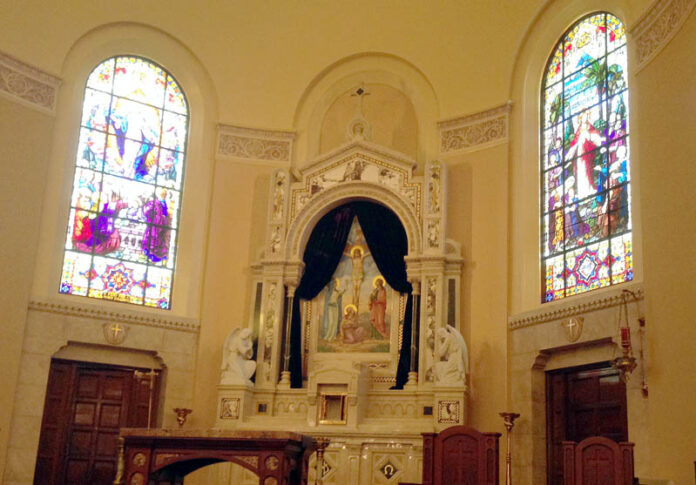

Giovanni Pergolesi composed his Stabat Mater in 1736, just a couple weeks before his death. The piece shares life timing with Mozart’s Reqiuem—his was composed on his deathbed, supposedly finished by another’s hand. Both are each composer’s most moving efforts. The pieces even share similar setting—the death and rebirth of Jesus—but Pergolesi’s is about half as long as Mozart’s, but still packs the same emotional wallop.
The music descended from the rear balcony as Good Friday churchgoers filed in the the noon mass. We saw no musicians but heard ethereal voices telling the story of a mother’s pain of watching her son die at the hands of another, holding him in her arms after his final breath had been taken. The English translation of the Latin text was read from the pulpit between movements, but otherwise not a word was spoken.
Religious or not, it was a very moving afternoon.
The 45-minute piece is divided into twelve movements. It’s quite varied, but the somber duets are the most transcendent moments, especially with the low bass of St. Vincent’s organ resonating the ribs while the notes resonate the heart. Gosh, that a cheesy take on such a magnificent piece, but sacred music is meant to be evocative.
Mozart’s Reqiuem is one of the most celebrated pieces of music ever composed. The D minor Mass is the most moving piece of religious music in the Western world, but it has a predecessor that moves me even more: Pergolesi’s Stabat Mater. Fritzche and a few other very talented singers in the North Bay perform this piece semi-regularly, and any chance to see it should not be passed up. It is traditionally performed with a small Baroque orchestra, but the arrangement is inconsequential to the music. It’s one of those pieces that’s just plain beautiful.
.Live Review: Good Friday Stabat Mater at St. Vincent’s Church












